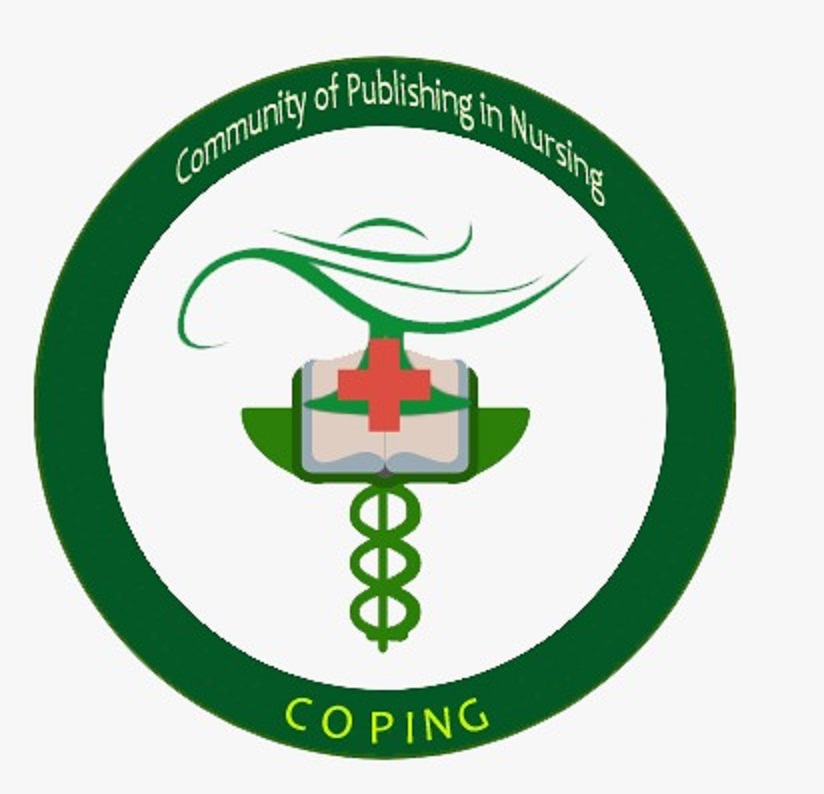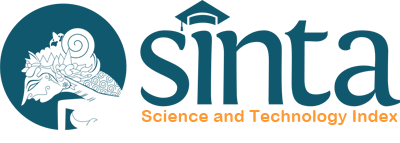PENGARUH TEKNIK RELAKSASI AUTOGENIK TERHADAP SKALA NYERI PADA PASIEN POST SPINAL ANESTESI DI RUMAH SAKIT PKU MUHAMMADIYAH GAMPING
Abstrak
If pain management is not optimal, it has detrimental consequences, which can cause disorders in the endocrine, metabolic, immune, and other body systems with clinical manifestations in the form of fever, hypertension, etc. Post spinal anesthesia pain is defined as pain experienced after post anesthesia anesthesia. Pain conditions often occur in post-cesarean section patients. One therapy that can reduce pain in post-spinal anesthesia patients is the autogenic relaxation technique. Autogenic relaxation is relaxation that comes from oneself which can calm the mind. The aim of this study was to determine the effect of autogenic relaxation therapy on the pain scale in post spinal anesthesia patients at PKU Muhammadiyah Gamping Hospital. This research design uses a pre-experimental design with one group pretest-post test design with the Wilcoxon test. The sample in this study was post spinal anesthesia patients aged 20-60 years, a total of 51 respondents using purposive sampling. Data were collected using the Numeric Rating Scale pain assessment sheet. The results obtained were the highest number of respondents based on the post spinal anesthesia pain scale before therapy, namely moderate pain of 47 respondents (92,2%) and severe pain of 4 respondents (7,8%), based on the post spinal anesthesia pain scale after therapy, namely mild pain of 12 respondents (23,5%), moderate pain was 35 respondents (68,6%), and severe pain was 4 respondents (7,8%). The results of the Wilcoxon sign rank test showed a p value of 0,001<0,05. The conclusion of this study is that there is significant influence between autogenic relaxation techniques on the pain levels of post-spinal anesthesia patients at PKU Muhammadiyah Gamping.
##plugins.generic.usageStats.downloads##
Referensi
Andika, M., Nurleny, N., Desnita, R., Alisa, F., & Despitasari, L. (2020). Penyuluhan Pemberian Foot Message Terhadap Perubahan Intensitas Nyeri Pada Pasien Post Operasi Di Ruangan Bedah Wanita RSUP Dr. M. Djamil Padang. Jurnal Abdimas Saintika, 2(2), 73-77.
Andriati, R. (2019). Perbedaan Pengaruh Pemberian Terapi Relaksasi Autogenic Terhadap Penurunan Tingkat Nyeri Pada Pasien Post Operasi Sectio Caesaria Di Rumah Sakit Buah Hati Ciputat. Edu Dharma Journal: Jurnal penelitian dan pengabdian masyarakat, 3(2), 9-16.
Angaramo, G., Savage, J., Arcella, D., & Desai, M. S. (2019). A comprehensive curriculum of the history of regional anesthesia.
Diahuputri, N. M. N. (2017). Efektivitas pemberian progressive muscle relaxation dibandingkan aromatherapy massage untuk meningkatkan kualitas tidur pada pekerja perempuan di Rumah Sakit Bali Royal Denpasar. Naskah Publikasi.
Fitriani, Y., & Alsa, A. (2015). Relaksasi autogenik untuk meningkatkan regulasi emosi pada siswa SMP. Gadjah Mada Journal of Professional Psychology (GamaJPP), 1(3), 149-162.
Harahap, M. W., Gaus, S., Ahmad, M. R., Husein, A., & Wirawan, N. S. (2022). Perbandingan antara Pregabalin 50 mg dengan 75 mg terhadap Derajat Nyeri dan Rescue Analgesia Pascabedah Seksio Sesarea. Jurnal Anestesi Obstetri Indonesia, 5(2), 76-82.
Ihsan, M., Kurniawati, F., Khoirunnisa, H., & Chairini, B. (2019). Evaluation of Pain Scale Decrease and Adverse Effects of Ketorolac Injections: An Observational Study in Patients with Postoperative Pain. Indonesian Journal of Pharmacy, 30(2), 133-140.
Kedokteran Ibnu Nafis, J., Azzahra Lubis, K., & Frans Sitepu, J. (2021). Incidence Of Pain After Obstetric Surgeryin The Delima General Hospital Medan In 2020.
Kementerian Kesehatan. 2021. Data Pembedahan Elektif di Provinsi Sumatera Barat. (https://www.kemkes.go.id/article/view/15082800002/pembedahan-tanggulangi-11-penyakit-di-dunia.html).
Kongur, E., Saylan, S., & Eroğlu, A. (2021). The effects of patient position on early complications of spinal anesthesia induction in arthroscopic knee surgery. Acta Clinica Croatica, 60(1), 68–74. https://doi.org/10.20471/acc.2021.60.01.10
Lee, J. H., Yoon, D. H., & Heo, B. H. (2020). Incidence of newly developed postoperative low back pain with median versus paramedian approach for spinal anesthesia. Korean Journal of Anesthesiology, 73(6), 518–524. https://doi.org/10.4097/kja.19409
Marandina, B. A. (2014). Pengkajian Skala Nyeri di ruang Perawat Intensive Literatur Review. Volume 1, 1(9).
Nurastam, S. N. M. (2019). Efektifitas Teknik Relaksasi Otot Progresif Dan Relaksasi Autogenik Terhadap Tingkat Nyeri Pada Pasien Post Operasi Seksio Caesarea Di Ruang Cempaka Rsud Ngudi Waluyo. Journal of Applied Nursing (Jurnal Keperawatan Terapan), 5(2), 145-154.
Nurhayati, N., Andriyani, S., & Malisa, N. (2015). Relaksasi autogenik terhadap penurunan skala nyeri pada ibu post operasi sectio saecarea. Jurnal Skolastik Keperawatan, 1(2), 52-61.
Palla, A., & Sukri, M. (2018). Faktor-Faktor Yang Berhubungan Dengan Tingkat Kecemasan Pasien Pre Operasi.
Rosida, L., Imardiani, I., & Wahyudi, J. T. (2019). Pengaruh terapi relaksasi autogenik terhadap kecemasan pasien di ruang intensive care unit rumah sakit pusri palembang. Indonesian Journal for Health Sciences, 3(2), 52-56.
Syafitri, E. N. (2018). Pengaruh teknik relaksasi autogenik terhadap penurunan tingkat stres kerja pada karyawan Pt. Astra Honda Motor di Yogyakarta. Jurnal keperawatan Respati yogyakarta, 5(2), 395-398.
Syamsiah, N., & Muslihat, E. (2015). Pengaruh terapi relaksasi autogenik terhadap tingkat nyeri akut pada pasien abdominal pain Di IGD RSUD Karawang 2014. Jurnal Keperawatan BSI, 3(1).
Syamsuddin, F., & Modjo, D. (2021). Pengaruh Pemberian Teknik Relaksasi Autogenik Terhadap Penurunan Tingkat Nyeri Pada Pasien Post Operasi Appendiktomi. Zaitun (Jurnal Ilmu Kesehatan), 3(1).
Syuhada, R., & Pranatha, A. (2017). Pengaruh Teknik Akupresure Terhadap Perubahan Skala Nyeri Pada Klien Post Operasi Sectio Caesarea Di RSUD 45 Kuningantahun 2017. Syntax Literate, 2(6).








